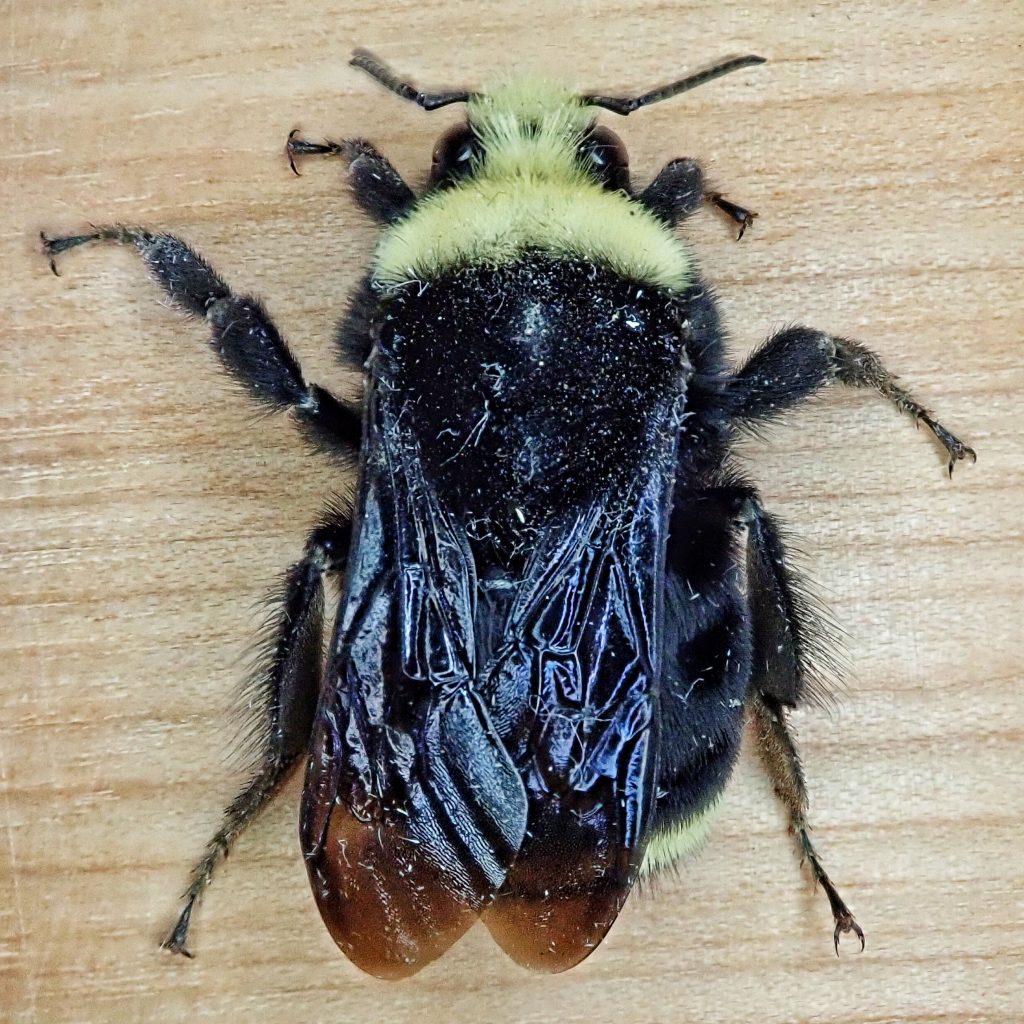
This is one of the most common bumble bees on the west side of the PNW. It is fairly large, and mostly black dorsally, with a yellow band near the end of the abdomen (on tergal segment 4, or T4, to be technical), a yellow face, and yellow on the pronotum (the dorsal plate that covers the thorax in most insects) from the wing base to the head. It is superficially similar to a pair of other yellow faced bumble bees, but can be differentiated from Bombus caliginosus by the yellow fringed hairs on the 3rd and 4th segments of the sternum (S3-4) of that species (which are all black on B. vosnesenskii), and from B. vandykei by the yellow abdominal band of that species being on T3 rather than T4.
Yellow-faced Bumble Bees are the earliest emergers of our bumble bees, becoming active in February. But that early flight period, coupled with habitat loss, may be one of the causes of lower diversity amongst Bombus spp, since B. vosnesenskii apparently out competes other Bombus for prime nesting sites and limited nectar resources.
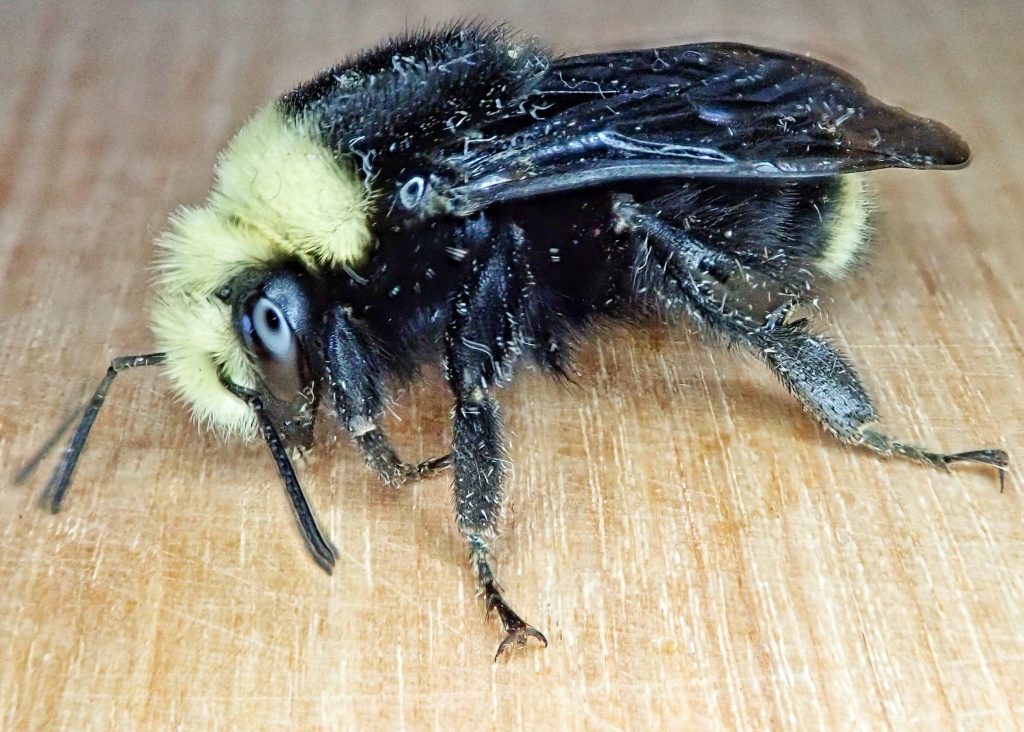
Like many bumble bees the Yellow-faced is a eusocial ground nester. Their colonies may contain as many as 300 bees once all of the eggs have hatched.
Queens emerge in the early spring and attempt to find an appropriate nesting site.(One of the primary problems of habitat loss is the concurrent paving over of the abandoned rodent burrows which are their preferred nesting site). They then lay a clutch of eggs which become the first group of workers. After that clutch has matured they relieve the queen of nectar and pollen gathering duties, and she concentrates on reproduction. After several clutches of workers (infertile females) and drones (reproductive males) have reached maturity a new generation of queens is reared. During this time, with many of the workers reaching the end of their lifespan, the queen once more takes up foraging duties. The new generation of queens sallies forth to mate, and having done so will hibernate through the winter to emerge in the spring and start the cycle again. Since bumble bees do not make and store honey, the colony dies out when the food runs out after the first hard frosts.
Yellow-faced Bumble Bees are an important agricultural pollinator, and bumble bees in general are the most important pollinators for tomatoes. Though they will sting they are not aggressive, and the vast majority of stings are merely because someone trapped one against their skin, or was disturbing a nest.
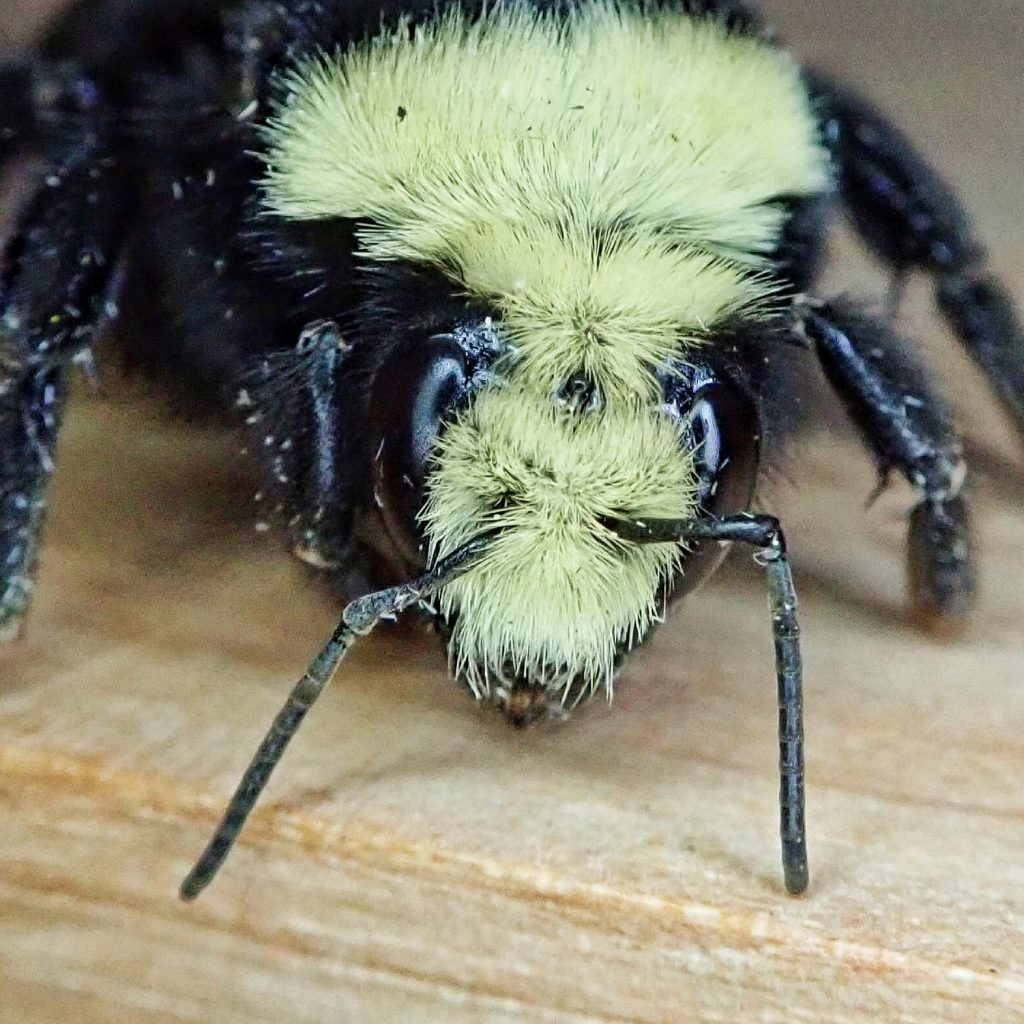
https://en.m.wikipedia.org/wiki/Bombus_vosnesenskii
http://www.beeandbloom.com/blog/bee-spotlight-yellow-faced-bumblebee
https://www.laspilitas.com/insects/bombus/Bombus-vosnesenskii.html
Size- Queen-21-25 mm; workers 11-20 mm; drones 13-18mm
Habitat- Open grassy areas, parks, shrub and chaparral
Range- Mostly west of the Cascades in our region
Eats- Wide variety of nectar and pollen sources
Flight Season- February to October
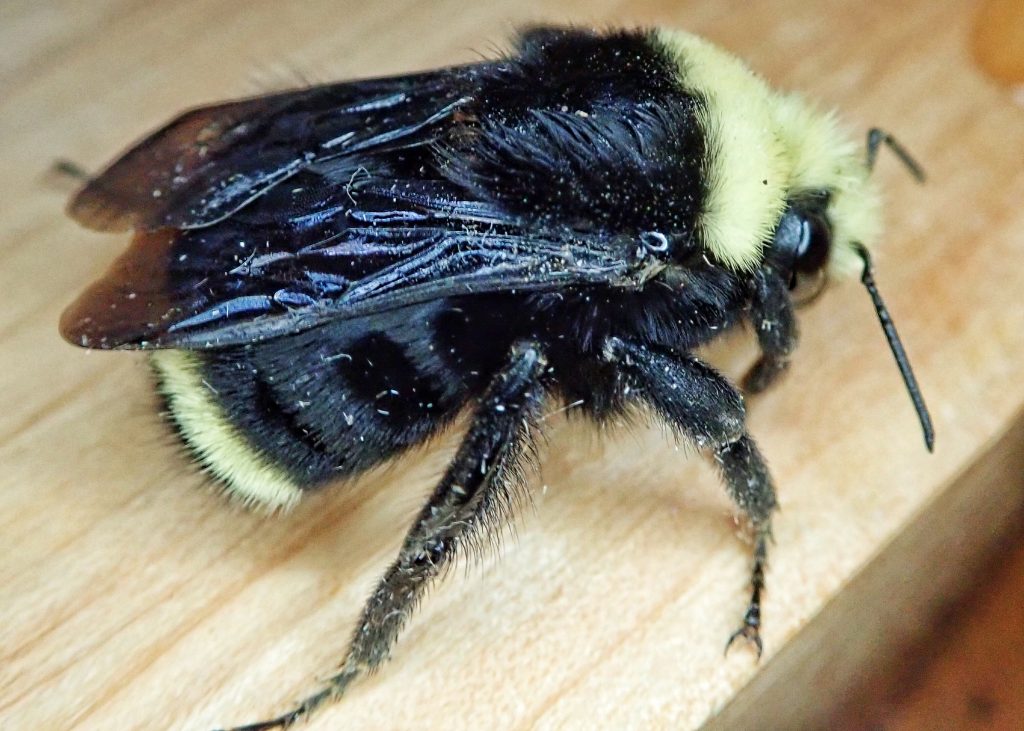
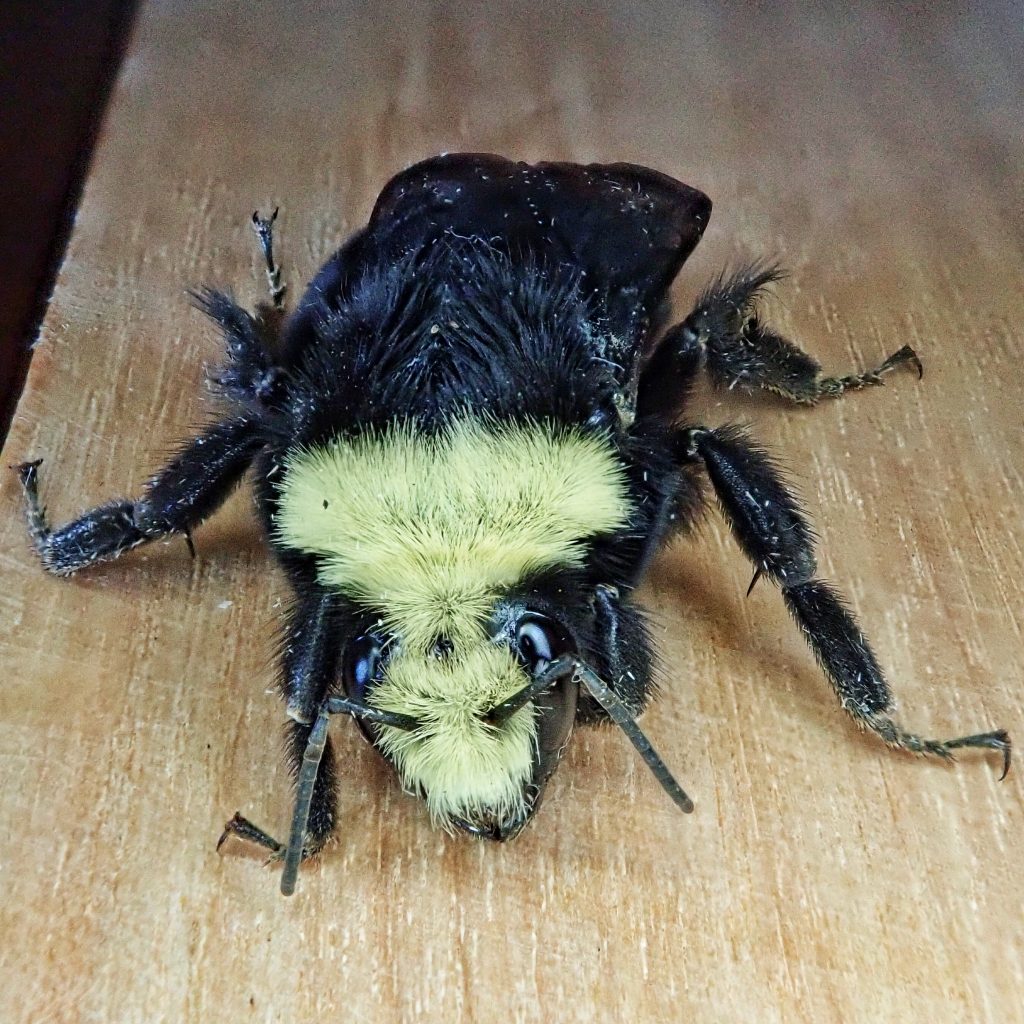
Great up-close look and info! I love the bumble bees so much!
Do you participate in the bumble bee counting project? I may do it someday. It definitely takes a trained eye to identify them.
I haven’t because I’m not very knowledgeable yet. But someday…
I got stung by several of these bees…I disturbed their nest putting my mower back in my shed. They had been using an old piece of carpet as their nest. These stings were very painful and some even stuck to me and I had to fight them off. I was swollen up wherever they stung me. I have an allergy to wasp and now seems that also have an allergy to bees. I got stung on 2 different days. They obviously didn’t like me. I ended killing all of them. Hated to do it but they kept stinging me.
Sorry to hear that, Diane.
Last year I walked over top their nest and was swarmed by 3 half inch ones but no stings. This year I was just sitting in a lawn chair but several feet from their nest when I was getting dove bombed by a huge female I think
She had a fierce not stop buzz as she rotated around me and bumping into me. Finally with a wave of my arm she stung me in the face. Hirt and swelled for days. Yesterday I found her in my kiddie pool unable to get out. Terrified but empathetic to her effort to get free of the water I put a long stick in the pool under her body until she grabbed hold and climbed aboard. She tested wiite a while before flying away. I felt good about that. Maybe she will pass the word along and they will leave me alone and just tend to my tomatoes.
Quite kind of you to rescue that bumble bee, Billy! Sometimes it can be hard to figure what motivates these bugs to do what they do.